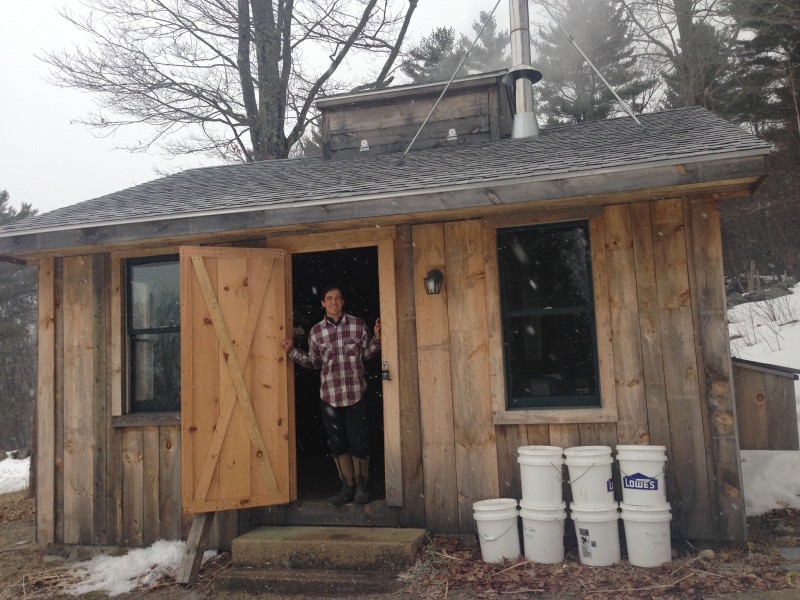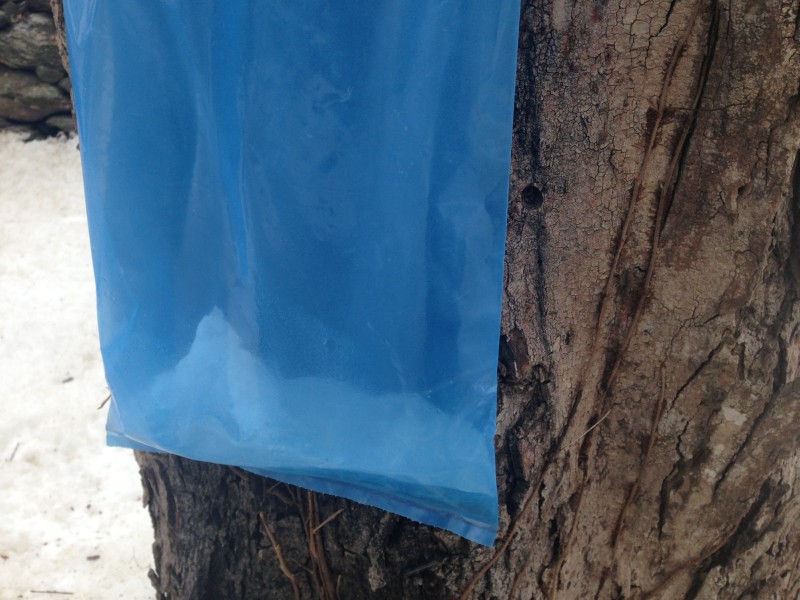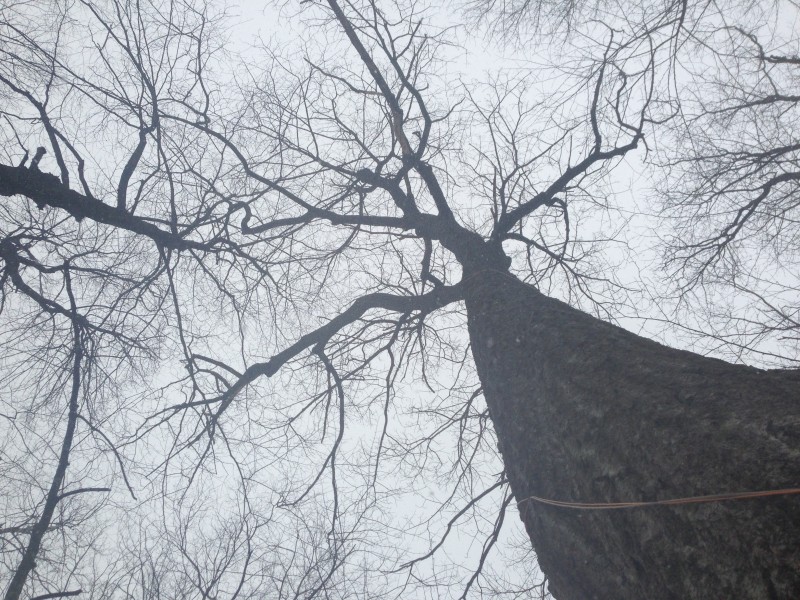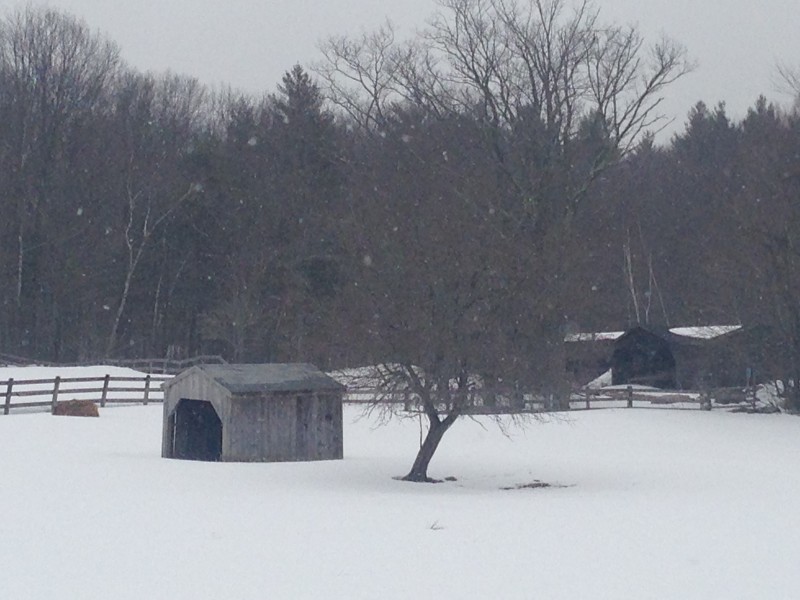NEW SEASON, OLD WEATHER
Ah the first day of spring: 22 degrees, and snowing. Should have known! Today marks a brand new season, but here at the Harvard Forest, it’s the same old weather. The winter of 2014-15 has already gone down in the history books here in New England as one of the coldest and snowiest ever. Boston broke its all-time snow record, with 108 inches. All the nuttier for me, living here at the Harvard Forest away from my home in Seattle – where my husband Doug keeps sending emails of flowers and blooming trees and crowing about already cutting the grass. Seattle shattered records for the warmest winter on record while we froze.
As I wrote in my last post, these are the sorts of extremes that we can expect to be our new normal as global change shakes up our world. Phenology – the study of seasonal changes in nature – has become a study of how we’ve altered seasonal time itself. The primary cause is people burning fossil fuels, which insulates the planet with heat-trapping carbon dioxide gas. Carbon dioxide levels are higher in the atmosphere now than they have been as far back as we can see, in gas bubbles trapped in ice from 800,000 years ago. As we keep stoking the climate system with more heat energy, expect more extremes to come; we’ll never settle down to whatever we thought normal used to be. Here at the Harvard Forest, while this winter was one of the coldest and snowiest, the winter of 2011-12 was one of the warmest.
But it was the first day of spring, so I went out for a walk to see what signs of the new season I could find. For one, I wanted to visit Joshua Rapp, a researcher at UC Davis working at the Harvard Forest. He fired up the boiler in the sugar shack today for the first time this winter. Rapp said he tapped trees on March 9 — about three weeks later than usual. But it wasn’t until last week that the snow finally drew back from the roots of the sugar and red maples, letting the sun into the tree wells in the snow and warming the soil at the roots. Finally, the sap started to flow, and the trees’ frozen crowns thawed.

Researcher Joshua Rapp started boiling sap today from the maples he tapped March 9 — about three weeks later than usual because it has been so cold.
The sap tapped in sugaring isn’t so much coming up from the ground, as flowing down from the thawing crown of the trees when daytime temperatures climb above freezing. Warm days and cold nights really get the sap flowing. But mostly, it’s just been… cold.
Snow drifted past the windows as the maple sap boiled over the wood fire, and the soft sounds of crackling wood and roiling sap purred in the cozy shack. An old pool house, the sugar shack was renovated by the Harvard Forest Woods Crew. This is its second season. It’s a beautiful building, classic and simple, sitting on a little rise at the edge of the forest overlooking meadows and stonewalls.
Rapp had a bit of finished syrup already. It was a beautiful, clear red-amber color. And the taste! Its maple essence bloomed on the tongue like a fine wine. He hopes to make 20 gallons this year.
Rapp is making this syrup from 29 tapped trees at the Harvard Forest – 19 sugar maples, and 10 red maples as part of his work studying the masting cycles of trees and its relationship to syrup production, and research he’ll continue on the maple syrup industry and forests as a Bullard Fellow, working in collaboration with Harvard Forest senior ecologist Johnathan Thompson come September.
Sugaring is patient work, watching the sap closely to make sure it doesn’t burn, and pouring it off at the right concentration. The trees have to cooperate too, and so far that’s been dicey. The sap collecting bags hanging on the sugar maples that line the Prospect Hill Road here at the Harvard Forest seemed a sign of spring for sure until a close look revealed the sap was frozen solid in the bags.

What’s wrong with this picture: The sugar maple sap froze solid in the bags on the first day of spring.
No surprise, really. It was cold enough to keep piling on my double wool mackinaw and I didn’t need snowshoes because the foot and a half of so of snow had freshly crusted with ice.
I said good-bye to Josh after that delicious taste of syrup and went up to check on BT QURU 03, the big oak I am writing a book about here as a Bullard Fellow. The oak has seen about a 100 winters, and was wearing a fresh dusting of snow when I stopped by.

It may well be two months before I see the first leaves on BT QURU 03, the grand old oak I am studying. It wore a fresh dusting of snow today.
I looked hard but saw no signs of spring at all yet in the forest, not so much as a pussy willow catkin. True, the birds are more active, but it had just started snowing again, so they were hushed. The longer daylight though was still a gift of the calendar. Now that we have passed the equinox, the days will now begin lengthening even more rapidly until the summer solstice in June.
I cut a bouquet of twigs from a half dozen varieties of native trees to bring indoors to force, so I can watch the buds unfurl up close. After all, at this rate it could be another two months before I see the first leaves on the big oak. For now, the twigs will just have to do.

With few signs of spring in evidence, I cut twigs to force inside. These will be the first leaves I expect to see for quite a while.


Leave a Reply